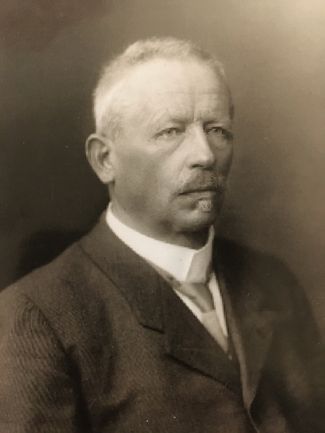2023
BKW is celebrating its 125th anniversary with a multi-day anniversary event in the cradle of BKW: At the Hagneck hydropower plant, Chairman of the Board of Directors Roger Baillod explains that BKW wants to reduce its greenhouse gas emissions from the energy business to "net zero" by 2040 at the latest. Further highlights: In January, BKW presents its plans for the largest ground-mounted solar plant at Bern-Belp Airport, in April Martin Zwyssig is appointed as the new CFO and in September the last fuel elements from the Mühleberg nuclear power plant (KKM) are transported to the interim storage facility in Würenlingen. Dismantling is proceeding according to plan - with the removal of the last fuel elements, the radioactivity in the KKM will be reduced by over 99 per cent.
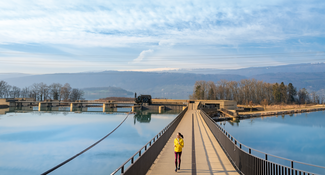
2022
In October, Robert Itschner takes over as CEO. The full-service IT provider UMB is integrated into BKW at the beginning of the year. BKW thus assumes a leading position in the Swiss market in the IT services business. With the acquisition of Solstis SA, BKW is continuing its growth strategy in the services business and in the field of renewable energy. BKW now employs 11,500 people. Thanks to its robust and promising business model, BKW is well able to cope with the extreme distortions on the energy markets caused by the war in Ukraine.

2021
In the challenging 2021 financial year the business model of BKW with its three pillars of Energy, Grid, and Services has shown its value. The company enters the next growth phase : BKW will increase its revenue to over CHF 4.5 billion by 2026, and its EBIT to over CHF 700 million. There is a change at the top of the Board of Directors: Roger Baillod replaces Urs Gasche who resigned. Also Suzanne Thoma, CEO of BKW since 2013, is announcing her retirement in mid-2022.
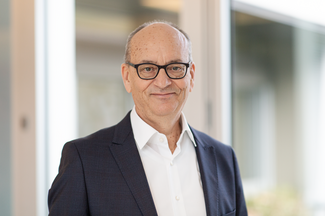
2020
BKW immediately starts dismantling its nuclear power plant. The company also ventures into the gas market. In addition to electricity, it now supplies gas as well – mainly to industrial companies, SMEs, property managers and gas suppliers. BKW betters its record result from the previous year. Even without the production of the Mühleberg Nuclear Power Plant, the company increases its revenue to more than CHF 3 billion.
2019
BKW posts the best result in its history. It continues to see strong growth in the Services business area and now employs more than 10,000 people in well over 100 companies. BKW becomes the first listed company in Switzerland to issue a green bond on the Swiss stock exchange, worth over CHF 200 million. At the end of the year, it becomes the first Swiss company to disconnect definitively a nuclear power plant (Mühleberg) from the network as planned, after 47 years of safe and reliable operation.
Would you like to know more about the decommissioning of Mühleberg Nuclear Power Plant? Visit our website: Decommissioning of Mühleberg Nuclear Power Plant
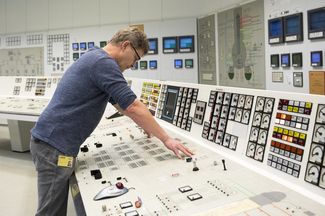
2018
BKW offers solutions in five core areas of expertise: BKW Energy, BKW Power Grid, BKW Engineering, BKW Building Solutions and BKW Infra Services. It continues on its steep growth trajectory and now has more than 7,000 employees.
2017
The Services business area continues to grow. In the Energy business area, BKW steps up the production of renewables. It takes over the Marker wind power project in Norway, connects three wind farms to the network in France, and commissions two small hydroelectric power plants in Switzerland.
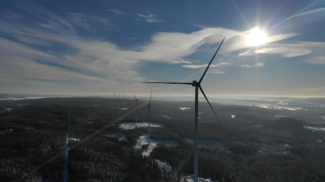
2016
In Norway, BKW is involved in the Fosen Vind project, Europe’s largest on-shore wind farm. In Switzerland, it puts four new hydroelectric power plants into operation. It continues to drive strong growth in the Services business. In the engineering sector, the BKW Group’s portfolio now also includes companies in Germany and Austria, in addition to those in Switzerland. It now employs over 5,000 people, two thirds of whom work outside the traditional Energy and Grid business.
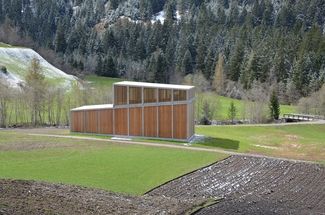
2015
BKW continues to enjoy significant growth in the Services business area, particularly in the field of building technology, where it launches “Home Energy”. This modular integrated solution enables home-owners to store, manage and efficiently use the solar power that they produce themselves.

2014
BKW’s strategy is based on three core business areas: Energy, Grid and Services. As part of this, the company aims to strengthen the Energy business, develop networks and expand the Services business. After already enjoying strong growth in the Services business, BKW now also offers its customers a comprehensive range of infrastructure and energy services. The goal is for the three business areas – Energy, Grid and Services – to contribute equally to the company’s profit (EBIT) in the medium term.
2013
BKW decides to continue operating the Mühleberg Nuclear Power Plant until the end of 2019 and then decommission it. As the first company to decommission a nuclear power plant in Switzerland, BKW leads the way for the Swiss energy industry, as it has so often done in the past.
2012
BKW presents its new strategy “BKW 2030”. Formulated with the phasing out of nuclear power in mind, it focuses primarily on the renewable energies of hydropower and wind in the area of production. Further components of the strategy include the systematic integration of decentralised electricity production, as well as the development of new business models.
2011
BKW acquires further wind farms in Italy and Germany to strengthen its position in this area. Together with 10 other Swiss electricity companies, it forms the association Smart Grid Schweiz to promote and expedite the introduction of smart electricity networks. At its headquarters in Bern, BKW opens its first smart charging station, with two electricity products for electric cars.
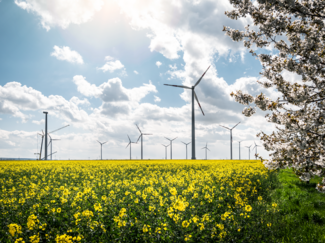
2010
BKW enhances its presence in the wind power sector. Together with Energie Wasser Bern, it establishes HelveticWind with the aim of building up a wind power portfolio with a total capacity in excess of 100 megawatts. It also acquires the project rights to a wind farm in the federal state of Brandenburg in the north-east of Germany.
2009
BKW and Fortore Energia S.p.A., a leading Italian company in the field of wind power generation, enter into a strategic partnership. BKW acquires a 33% stake in the newly formed company Fortore Wind. The aim of the partnership is to build and operate wind farms with a total capacity of around 600 megawatts (MW) by 2016. The partnership consolidates BKW’s leading position among Swiss wind power producers.
2006
BKW concludes a contract with the Milan-based company Elettra Holdings GmbH (Elettra) for the acquisition of eight hydroelectric power plants and two gas power plant projects. It also acquires a 25% share of the gas-fired combined cycle power plant owned by E.ON Energie AG (E.ON) in Livorno Ferraris, northern Italy. It thereby strengthens its position in the Italian market while at the same time uniting its business activities in Italy under BKW Italia S.p.A.
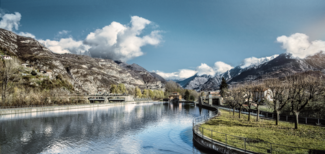
2003
BKW shares are listed in the main segment of the SIX Swiss Exchange on 28 May 2003. In a secondary placement, around 8% of BKW’s shares are made available to the public on 25 June 2003. BKW thereby lays the foundations for opening itself up to a wider circle of shareholders and improving trading liquidity for its shares. The proportion of shares held by the public (the “free float”) amounts to around 27% after the placement and thereby fulfils the criteria for having the BKW share included in the Swiss Performance Index (SPI). It is listed on 1 October 2003.
2002
BKW and the Canton of Jura sign a contract for an energy supply partnership and for the acquisition by BKW of a 35% stake in Energie du Jura SA.
2000
BKW has its Aarberg hydroelectric power plant certified with the “naturemade star” quality label and establishes a related eco fund, which is financed by a levy from the sale of the certified electricity. The fund’s assets go towards environmental improvement measures.

1999
On 25 June, the General Meeting increases BKW’s share capital from CHF 120 to 132 million. On 26 December, the electricity supply is severely disrupted by hurricane-like storms. BKW lines at all voltage levels with a length of over 3,800 km are temporarily out of service due to damage caused by storm Lothar. It is only thanks to the hard work of up to 450 specialists that the BKW network can be restored to almost full working order within 10 days.

1996
BKW commissions its JUVENT wind farm in the Bernese Jura. The first three turbines are put into operation at the time, and more are added over the years. The older systems are later replaced with new models as part of a “repowering” programme aimed at increasing the wind farm’s annual production to 70 gigawatt hours by 2016.
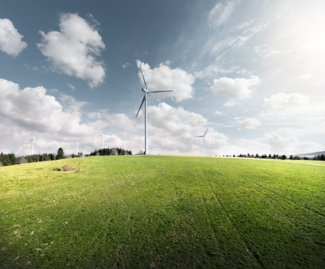
1992
On Mont Soleil, the BKW-managed company Gesellschaft Mont-Soleil commissions a solar power plant bearing the same name. At the time, it is the largest solar power plant in Europe.

1972
With the Mühleberg plant, BKW commissions the third Swiss nuclear power plant after Beznau I and II.
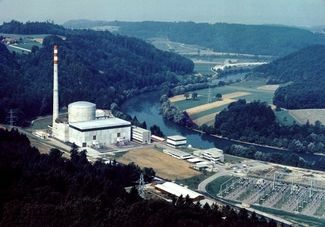
1958
Electricity has become an indispensable source of energy in industry, commerce and households. To reduce the risk of power cuts, BKW connects its network to those of other electricity plants. The Swiss, German and French networks are connected in 1958. All countries in Western Europe are now connected to the international electricity network, which means that BKW is involved in the cross-border exchange of electricity from the very beginning.
1950
BKW procures a third of its electrical energy from external power plants. To fix the general shortage of electricity, the construction of large storage power plants in the style of KWO begins in the 1950s. They are mostly built and operated by several electricity companies together. The electricity created from the intensive use of hydropower is often referred to as “white coal”.

1925
The importance of hydropower for energy production in Oberhasli is recognised early on. In 1925, BKW forms Kraftwerke Oberhasli AG (KWO) as a subsidiary. Later, the Canton of Basel-Stadt and the cities of Bern and Zurich each acquire one sixth of the share capital. The Handeck I power plant is built with the Grimsel and Gelmer reservoirs between 1925 and 1932. After this initial phase, it is not until 1979 that the expansion (eight dams, nine power plants) is provisionally completed with the commissioning of the Oberaar-Grimsel pumped storage plant.

1917
BKW starts the construction of its seventh hydroelectric power plant in Mühleberg.

1903
Five years after the formation of the company, the General Meeting decides to purchase the Kanderwerk with the Spiez power plant. The name is changed accordingly to “Vereinigte Kander- und Hagneckwerke A.-G.”
1898
The company “Aktiengesellschaft Elektrizitätswerk Hagneck” is formed with the aim of supplying the Seeland region with electricity. It is a period shaped by pioneers and private initiators, who recognise the potential and promise of the relatively new power plant technology and the transmission of electrical energy over long distances, and help to achieve a breakthrough. Eduard Will, a merchant from Nidau, is the driving force behind the construction of the Hagneck hydroelectric power plant. He is considered the actual founder of BKW.
